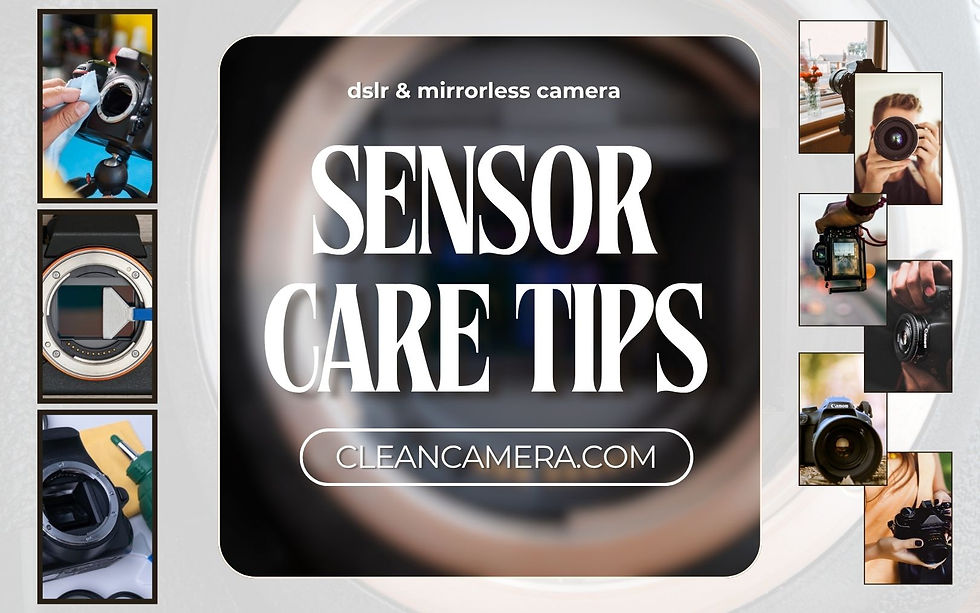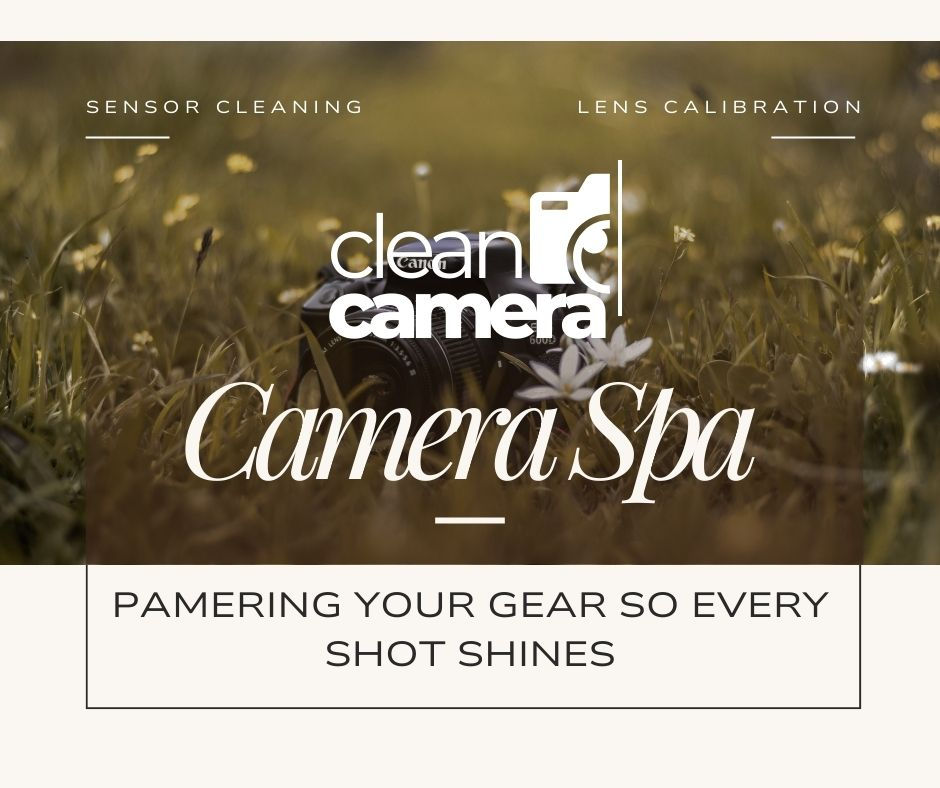Sensor Care & Maintenance Tips | Clean Camera Repair
- Melonie Marie McEver

- Oct 4
- 4 min read
Welcome to Sensor Care & Maintenance Tips with Clean Camera Repair—your trusted resource for unlocking sharper photos with a clean camera sensor. Dust and micro-particles can sneak onto your sensor, creating pesky black spots on images and causing unnecessary frustration for photographers and content creators of all skill levels.
Whether handling periodic maintenance yourself or seeking professional help, you’ll find easy-to-follow guides and safety tips right here. Explore the world of clean camera repair tips for sensors—and elevate every shot with flawless image quality.
Sensor Care & Maintenance Tips at Home
By Factory Trained Camera Repair Technician, Tim McEver

A clean sensor is the heart of sharp, vibrant photography. As a factory trained camera repair technician with over 35 years' experience, Tim McEver shares how proper sensor care ensures every shot is picture-perfect and your gear lasts for years.
Clean Camera Repair | Proper Sensor Cleaning Starts with Manufacturer Guidance
Always begin sensor cleaning by reading your camera manufacturer's manual. Each camera can have special coatings on critical parts, like lenses or sensors, and using the wrong cleaning materials can damage these delicate surfaces. Each model comes with unique instructions designed to protect your investment and maximize image quality.
A clean camera sensor is essential for sharp, flawless images,
but many photographers are understandably nervous about home sensor care. Fortunately, with the right approach and a steady hand, keeping your sensor spotless is not only possible but can also extend the life of your equipment and save you from frustrating retouching.
Proper Sensor Cleaning Starts with Manufacturer Guidance
Always begin sensor cleaning by reading your camera manufacturer's manual. Each camera can have special coatings on critical parts, like lenses or sensors, and using the wrong cleaning materials can damage these delicate surfaces. Each model comes with unique instructions designed to protect your investment and maximize image quality.
Tim’s “DO NOT DO” Sensor Care List
Do not use canned air or high-pressure air on your sensor, as it can dislodge internal components and force debris into sensitive electronics.
Do not use household or generic cleaning cloths. Always opt for camera-specific, lint-free swabs and solutions recommended by your manufacturer.
Do not touch the sensor directly with fingers. Even trace amounts of skin oil can attract dust and degrade image quality.
Do not attempt sensor cleaning if unsure about the process. Seek professional help to prevent accidental scratching or coating damage.
Do not use common lens cleaning solutions on coated lenses or sensors, as they may strip special coatings and permanently harm your gear.
Focus on Safety and Precision
Caring for your camera sensor at home, under the guidance of your manufacturer, is the best way to achieve spotless images and prolong equipment life. Make sure every cleaning product you use is certified, gentle, and tailored for your camera brand
Trust in the experience of a Clean Camera Repair professional, and remember: When in doubt, consult your manual or book a cleaning with a trained technician like Tim McEver to keep your photography gear safe and performing its best.
Home Sensor Care Tips with Clean Camera Repair
A clean camera sensor is essential for sharp, flawless images, but many photographers are understandably nervous about home sensor care. Fortunately, with the right approach and a steady hand, keeping your sensor spotless is not only possible but can also extend the life of your equipment and save you from frustrating retouching.
Start by reviewing your camera manufacturer’s manual. Every camera model is unique, and many modern sensors and lenses feature special coatings that can be ruined if improper materials or fluids are used. Use only cleaning tools and solutions certified for your specific make and model, and never improvise with household items or generic cleaning products.
Before attempting cleaning, fully charge your camera and choose a dust-free environment. Use a manual blower (never canned air, which can force debris deep into the body) to dislodge loose dust. If spots persist, apply a dedicated sensor cleaning swab and solution, following the precise instructions that come with the kit and your camera manual. Never touch the sensor with bare fingers, and never use paper towels, t-shirts, or any non-camera-specific cloth.
A few critical “Do Not” reminders: Do not rush the process. Do not attempt a wet clean if you’re unsure about the correct procedure. Above all, do not ignore the manufacturer’s advice—shortcuts can lead to scratches or damage that a professional may not be able to repair. If in doubt, professional help is just a service appointment away.
With patience, precision, and respect for your camera’s unique requirements, sensor care at home becomes a simple, rewarding routine. By maintaining a spotless sensor and trusting the guidance provided by your camera’s manufacturer, you ensure your images consistently meet the high standards you aspire to achieve



Comments